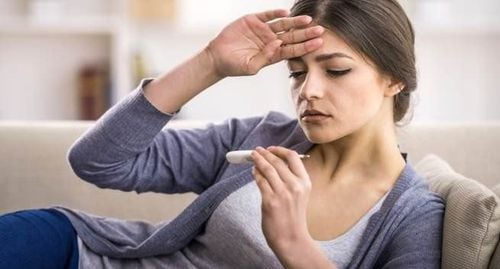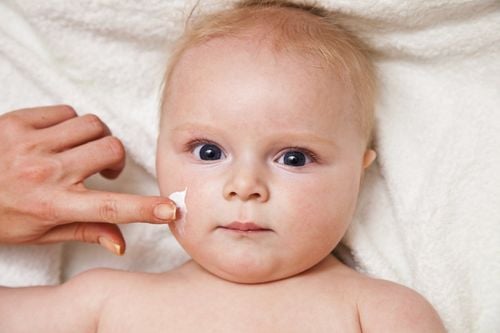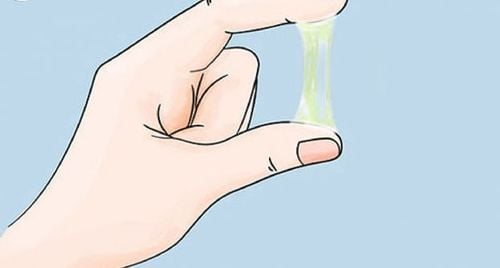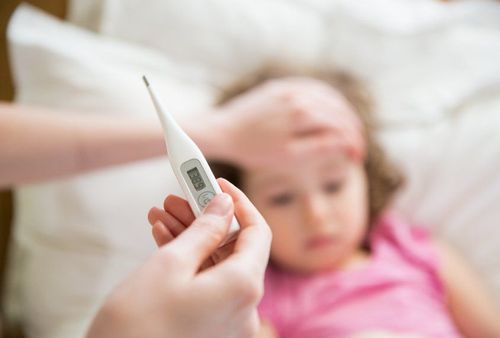This is an automatically translated article.
The article was consulted with Master, Doctor Doan Ngoc Quynh Tram - Pediatrician - Neonatologist - Department of Pediatrics - Neonatology - Vinmec Nha Trang International General Hospital.Febrile convulsion in children is a condition that can occur when a child has a high fever. Depending on the febrile convulsion, there will be different characteristics and based on that to distinguish febrile convulsion in children due to any injury causes.
1. Febrile convulsion in children
Fever and convulsions are common in infants and children. In infants, the most common age is from 6 months old, usually about 1 - 1.5 years old. Febrile convulsions can occur as young as 5 years old.Convulsions may appear in the following cases:
The body is infected with viruses or bacteria that cause infections in the organs of the respiratory or digestive system, urinary tract, ... Children after vaccination Have an acute illness with symptoms of fever. However, it is important to distinguish febrile seizures in children from neurological abnormalities caused by encephalitis, meningitis or acute metabolic disorders in the body.
Febrile convulsions in children are not hereditary, however the incidence of febrile seizures in identical twins is higher or due to some related genes.
2. Characteristics of febrile seizures in children
Febrile seizures can be simple or complex. Depending on the type, there will be different characteristics:Febrile convulsion: A full-body convulsion that lasts no longer than 15 minutes and has no abnormal signs in the child's nervous system. Most febrile seizures in children are febrile seizures. Complex febrile convulsion: A partial convulsion lasting more than 15 minutes, with signs of neurological function recovered in about 1 hour. However, children may have recurrent seizures during fevers. Febrile seizures: A seizure that lasts more than 30 minutes.

3. Signs of febrile convulsions in children
In the process of taking care of children, parents can recognize the signs of febrile convulsions in children through the following basic manifestations:A seizure may appear when the child does not have a fever or has a low fever. However, when the fever is above 38.5 degrees Celsius, convulsions most often occur. Generalized convulsions are typical when the body begins to rapidly increase in temperature with the sign of vibrating, atony. After the first 24 hours, febrile convulsions in children may recur for longer periods of time from a few minutes to several hours. If convulsions persist for more than an hour or localized signs are observed in the child, evidence of an acute central nervous system disorder should be identified.
4. Prognosis of febrile convulsion in children
In fact, depending on the state of febrile seizures in children, different prognosis can be given.Febrile seizures in children can recur at about 35%, this rate can be higher if the child has had a fever and convulsions before the child is 12 months old. Children are at higher risk of relapse if they have complex febrile seizures or have developmental delays. Most febrile seizures in children do not cause neurological sequelae. But febrile seizures can be an early sign of an undetected neurological disorder. Neurological signs may appear or be discovered later. At that time, fever is not the cause of the convulsion. Prolonged and untreated febrile seizures may be related to damaged parts of the brain such as the hippocampus.
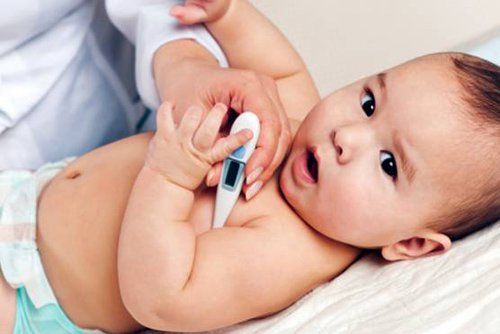
5. Prevention of febrile convulsions in children
Febrile convulsions in children are very dangerous if not detected and treated promptly. Therefore, to prevent unnecessary complications, when a child has a fever, parents should note:Monitor the child's temperature regularly and carefully. When a child has a high fever of 38.5 degrees Celsius or higher, it is necessary to take measures to reduce fever to prevent possible febrile convulsions. Avoid self-preventing recurrent febrile convulsions by maintaining medication unless convulsions persist or occur in multiple episodes. Depending on whether febrile convulsions in children are simple or complex, they will be characterized by generalized or partial convulsions with varying duration.
The fact that a child has a febrile convulsion will not affect the child's development. When a child has a high fever convulsion, parents should calmly care for the child according to the instructions. Immediately after the seizure stops, the child should be taken to a medical facility for examination and treatment.
Pediatrics - Vinmec International General Hospital is the address to receive and examine diseases that infants and young children are susceptible to such as: viral fever, bacterial fever, otitis media, bronchitis, Pneumonia in children,.... Under the dedication of a team of highly qualified doctors, children's health will soon be stabilized. When choosing a medical examination at the hospital, customers will be welcomed and used modern facilities and equipment along with perfect medical services.
Please dial HOTLINE for more information or register for an appointment HERE. Download MyVinmec app to make appointments faster and to manage your bookings easily.





